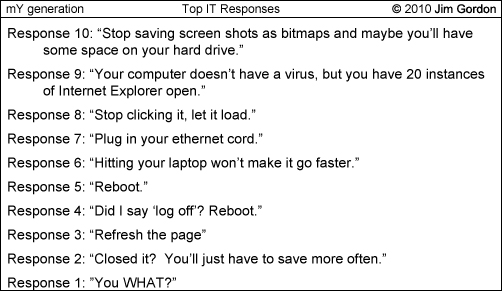|
|
|
Thursday, August 30th, 2018

In a previous life I had a title of Customer Success Manager at a tech company. As the name implies, I was tasked with ensuring the desired outcome for our clients was met on every level.
Sometimes clients just wanted to be heard and I was a therapist. Other times there were specific business criteria that had to be achieved and I felt like a CFO that was building my case to deliver to the board.
One thing was clear though. Success meant different things to every client.
My title no longer carries that tag line of CSM but the desire to exceed customer expectations continues. As I am in a client facing role (and can’t imagine it otherwise), success is still top of mind within my interactions.
However, I sometimes wonder if I am truly achieving it and what is the measure for success?
We have all been delayed at airports. You fly more than once in your life and it happens. Typically I don’t get too upset, because a lot of it is out of the hands of the crew. They don’t want the delay either.
However, there are a variety of ways the crew can deal with it. I have seen some that ignore the issue and hope it goes away. Pro tip, it doesn’t. I have also seen crews decide to make it a party by giving out extra snacks or drinks.
Same situation, different outcomes.
As the veil is lifted between brands and consumers, it become easier than ever to vocalize your displeasure.
This has had the effect of highlighting those brands that are nimble and responsive and those that double down on the trashcan fire by pouring gasoline on it.
I’m looking at you United Airlines. #notafan
But what does success really look like? There are KPI’s, surveys and referral programs. In the end, success has many forms, but for me it comes down to this.
Was I happy with the interaction? Would I talk to a friend positively about said company?
That’s it. I know it’s hard to quantify, but, in my heart, those two questions are the key to success.
Image credit: Hiking Artist
Posted in Ryan's Journal | No Comments »
Wednesday, August 29th, 2018

What do the companies with the best customer service have in common?
Engaged employees.
Engaging workers isn’t dependent on salary and perks, if it was, Chick-fil-A, Trader Joes and Aldi (TJ’s parent company) wouldn’t hold the top three spaces on the Forbes Best Customer Service List.
While there are many things that can drive engagement, good management is probably at the top of the list.
And while the executive team impacts engagement, it’s the individual’s own manager who really makes the difference.
A bad manager will taint the best corporate culture, while a really good one will offset bad culture by acting sheltering their team from the impact.
Back in 2008 I listed four points needed to engage your team, and they are just as true, if not more so, a decade later.
- The guideline is the same thread that has run through every major philosophy and religion for thousands of years—treat your people as you want to be treated, whether your boss treats you that way or not.
- Authenticity is the current buzz word, but it translates simply to be honest, open and do what you say; never fudge, let alone lie, intentionally or otherwise.
- There are absolutely no circumstances that warrant or excuse the messenger being killed. None. Because if you do, there’s no going back—ever.
- If your company doesn’t have an engaging culture then you must be an umbrella for your people, because you can create one below you, even if you can’t change it above.
Truly great customer service requires engaged employees, because they are the only ones who can provide customers with the best experience possible.
Image credit: mikeg44311
Posted in Culture, Motivation, Retention | No Comments »
Monday, August 27th, 2018

Poking through 11+ years of posts I find information that’s as useful now as when it was written.
Golden Oldies is a collection of the most relevant and timeless posts during that time.
For centuries ‘customers’ were the people who bought a company’s products or services. A few decades ago that started to change and not just. Governments started recognizing that taxpayers were, in fact, customers, as did schools and universities, with regards to their students. Hospitals and doctors embraced, or were forced to, the idea of patients as customers.
Through most of that time customer service was mostly a function of caveat emptor. Even before the web and social media made both complaining and complimenting easy ‘ before that, gossip and message boards spread the word. The change is most easily seen in the medical world where Medicare/Medicaid and insurance companies, paying based on outcome, as opposed to fee-for-service, have forced radical change in patient care.
It was during this period that management academics and gurus put forth the idea that workers were customers and customer service was the responsibility of their direct boss—not HR.
Read other Golden Oldies here.
Customer service is a major topic these days (more on that tomorrow); as is employee retention, but do they really have anything in common?
Absolutely.
Every manager, from team leader to CEO, is also a customer service manager, because your people are your customers.
That’s right, customers.
More accurately, that makes you an ESM—employee service manager.
Why do you service your people? To
- help them achieve their full potential;
- assure high productivity;
- lower turnover; and
- create an environment that’s a talent magnet.
How do you service your people? By
- cultivating the kind of MAP (mindset, attitude, philosophy™) that truly values people and understands how important it is to manifest that;
- offering high-grade professional challenges to all your people and making sure that they have the resources and all the information necessary to achieve success;
- fostering fairness so that people know they are evaluated on their merits and favoritism plays no part; and
- always walking your talk and living up to your commitments.
What’s in it for you?
- Better reviews, promotions and raises;
- increased professional development;
- less turnover and easier staffing; and
- what goes around comes around—everything that you give your people will come back to you ten-fold!
Flickr image credit: Angela Archer
Posted in Culture, Golden Oldies, Motivation, Retention | 1 Comment »
Monday, June 10th, 2013
 Customer service is a major topic these days (more on the tomorrow); as is employee retention, but do they really have anything in common? Customer service is a major topic these days (more on the tomorrow); as is employee retention, but do they really have anything in common?
Absolutely.
Every manager, from team leader to CEO, is also a customer service manager, because your people are your customers.
That’s right, customers.
More accurately, that makes you an ESM—employee service manager.
Why do you service your people? To
- help them achieve their full potential;
- assure high productivity;
- lower turnover; and
- create an environment that’s a talent magnet.
How do you service your people? By
- cultivating the kind of MAP (mindset, attitude, philosophy™) that truly values people and understands how important it is to manifest that;
- offering high-grade professional challenges to all your people and making sure that they have the resources and all the information necessary to achieve success;
- fostering fairness so that people know they are evaluated on their merits and favoritism plays no part; and
- always walking your talk and living up to your commitments.
What’s in it for you?
- Better reviews, promotions and raises;
- increased professional development;
- less turnover and easier staffing; and
- what goes around comes around—everything that you give your people will come back to you ten-fold!
Flickr image credit: Angela Archer
Posted in Culture, Retention | No Comments »
Tuesday, April 23rd, 2013
 Did you know ‘communications’ are like the Force, with both a light and dark side? Did you know ‘communications’ are like the Force, with both a light and dark side?
Communications may be used to engage, enlighten and clarify.
Communications may be used to confuse, coerce and obfuscate.
I usually write about the light side of communications.
Dark-side communications are what brought the economy down and are still popular, most recently at JP Morgan.
Consider the following presentation written by Bruno Iksil, the whale himself, on Jan. 26, 2012, as the losses were growing. He called for executing “the trades that make sense.”
He proposed to “sell the forward spread and buy protection on the tightening move,” “use indices and add to existing position,” “go long risk on some belly tranches especially where defaults may realize” and “buy protection on HY and Xover in rallies and turn the position over to monetize volatility.”
Confusing? Don’t feel alone; that was the finding of the Senate investigation report.
“This proposal encompassed multiple, complex credit trading strategies, using jargon that even the relevant actors and regulators could not understand.”
Companies of all sizes have a responsibility to communicate so their customers understand.
Bosses have a responsibility to communicate in ways their people understand.
Not that you’d know it listening to them or reading the content they produce—it’s full of jargon and jargon is the bane of clarity.
So which side are you on—light or dark?
By the way, that choice carries into your personal life in the way you choose to communicate with your family, friends, pets and all other constant or random interactions with anything that breathes.
Flickr image credit: Marina Avila
Posted in Communication, Ducks In A Row | No Comments »
Wednesday, March 6th, 2013

Are you familiar with Eric Ries’ 2008 conception of lean strategy? Its focus was/is startups, but Scott Cook, Intuit cofounder and current chairman of its Executive Committee, believes it applies to any company looking to innovate, large/old as well as small/young.
A major hallmark of lean is the idea of talking to the target market early to get customer feedback in order to create what the market truly wants,
Lean can be applied to anything—product, service, branding strategy, etc.
Why isn’t it? Why do companies, from Fortune 50 to startups still insist on developing [whatever] and being shocked when customers don’t clamor for it?
Scott’s insight, based on his own experience, provides a telling answer.
“Success is a powerful thing, it tends to make companies stupid, and they become less and less innovative.”
Case in point: Ron Johnson, J. C. Penney’s CEO and the ex head of Apple’s retail ops, who was hired to turn Penney’s around.
Based on his success at Apple, part of Johnson’s strategy was to eliminate sales, coupons and promotions in favor of a steady three-tiered pricing approach.
However, Penney’s isn’t Apple and apparently Johnson didn’t check to see if its customers liked that approach.
They didn’t.
(Even the TV ads didn’t makes sense to me. Remember the kid with the hoop and the dog jumping through it? Hmm, maybe customers don’t identify themselves with trained dogs.)
It’s one thing to stick to your brilliant idea in the face of disagreement from experts, but it’s quite another to do so while ignoring customer input.
As Scott said, “For me it was seeing my brilliant ideas—which I just knew were right—not work.”
The take-away here is to get customer feedback, listen to it and tweak [whatever] accordingly.
And before you say you have no customers and walk away, remember that customers aren’t just the folks who buy a product or service; they are also your people, peers, kids, parents, etc.
Flickr image credit: Betsy Weber
Posted in Innovation | 1 Comment »
Sunday, December 16th, 2012
 Shopping may not be exactly the kind of subject matter you expect when you visit, but you have to admit it’s timely. Shopping may not be exactly the kind of subject matter you expect when you visit, but you have to admit it’s timely.
Although not everybody loves it, “I hate shopping. If I need something, even a pair of socks, my assistant has to get them for me. I hate shopping!” The quote is anonymous, but it could be my sister, except she doesn’t have an assistant.
Shopping serves many purposes.
Tammy Faye Bakker, she of the four-inch false eyelashes, thinks shopping is therapeutic, “I always say shopping is cheaper than a psychiatrist.”
I’ve seen many comparisons of shopping and sex, but Adrienne Gusoff’s is one of the funniest, “Shopping is better than sex. If you’re not satisfied after shopping you can make an exchange for something you really like.”
Shopping is different for women and men as pointed out by Elayne Boosler, “When women are depressed, they eat or go shopping. Men invade another country. It’s a whole different way of thinking.”
I think men should learn to eat or go shopping, but as Cynthia Nelms so wisely says, “If men liked shopping, they’d call it research.” That’s OK, research beats war any day.
Then there is Usher, who is either more introspective or more honest than most men, “I was so nervous…I just had to go shopping”
And with just nine more shopping days nervous is what a lot of you probably are, so go shopping.
Image credit: Charlie Brewer
Posted in Quotable Quotes | No Comments »
Friday, October 19th, 2012
 A Friday series exploring Startups and the people who make them go. Read all If the Shoe Fits posts here A Friday series exploring Startups and the people who make them go. Read all If the Shoe Fits posts here
If your business provides a service over the Internet what value do you place on customer service?
An article about Hyatt CEO Mark Hoplamazian’s approach to employees and customer service (shades of Tony Hsieh) as a non-product business got me thinking.
Internet companies aren’t known for great customer service—they’re known for not having any.
The only way to reach most of them is by email or their contact form.
Assuming you actually get a response, it’s most often a form note that sends you to Help; Facebook even claims people prefer that approach.
Mr. Wolens said that Facebook believes that its users prefer “self-remediation” — basically, online solutions they find without help — to dealing with Facebook employees.
Comments like this make me wonder if Internet companes have any understanding of humans at all.
Do they (you?) really believe that the majority of people having problems using a product/service/whatever-you-call-it like digging through crappy descriptions of problems that never quite address theirs?
Enterprise, the car rental company has done a lot of quantitative work on the effect of customer service based on a customer rating system that goes from one to five.
“In my discussion with Enterprise, they said that people who give a ‘five’ are three times more likely to return than those who give a ‘four,’” Hoplamazian noted. “And the people who give a ‘four’ are twice as likely [to come back] than [those who give lower numbers]. Below a ‘four,’ and you might as well forget it. The only thing that matters is customer satisfaction.”
I’ll bet similar stats hold true for Internet companies; not just for returning, but for recommending.
It is too-big-to-fail arrogance, such as you find at Facebook and Google, that result in no customer service.
And that attitude trickles down to the entrepreneurs who emulate them.
(My apologies for not posting yesterday.)
Option Sanity™enhances custoer service.
Come visit Option Sanity for an easy-to-understand, simple-to-implement stock allocation system. It’s so easy a CEO can do it.
Warning.
Do not attempt to use Option Sanity™ without a strong commitment to business planning, financial controls, honesty, ethics, and “doing the right thing.”
Use only as directed.
Users of Option Sanity may experience sudden increases in team cohesion and worker satisfaction. In cases where team productivity, retention and company success is greater than typical, expect media interest and invitations as keynote speaker.
Flickr image credit: HikingArtist
Posted in Entrepreneurs, If the Shoe Fits | No Comments »
Monday, May 24th, 2010
 Do you run a small or medium business (SMB)? If so, do you have a senior staff? Do you run a small or medium business (SMB)? If so, do you have a senior staff?
“Senior staff” doesn’t necessarily mean a bunch of vice presidents (for convenience I’m using that title), but it does mean the top people in your company who manage different functions (with or without staff). They are the people you rely on
- as a sounding board;
- for both tactical and strategic intelligence;
- to tell it like it is—even when you don’t want to hear it
- to see and understand the big picture;
- to lead the effort in employee acquisition, motivation, and retention;
- to support and strengthen the culture she envisioned;
- to not sabotage another group or start a turf war, and
- to help stamp out politics whenever and wherever it rears its ugly head.
And more, but you get the idea.
How to build your senior staff
The first item on your agenda is to determine what parts of your business/company beyond the standard finance, development, marketing, sales should report directly to you for peak performance. You don’t want a function that is absolutely critical to your success reporting through or responsible to someone else (agendas do get in the way).
It may be customer service (or whatever it’s called); it could be IT; if you are large enough to have someone handling HR it should definitely report directly to you.
Support functions, such as HR, are often left to report to someone else, which can prevent you from knowing what is really going on.
Where does one find talented VPs? Now and then you’ll be lucky enough to actually hire someone complete with all the bells and whistles that you want, but it’s more likely that you will find someone with the right potential.
Be aware that the main thing that separates good senior staff apart from other managers is a strong strategic ability, which means they see the entire team and understand how their department or area fits into the whole.
I’ve known many C-level executives who never grasp this, as well as director level and lower managers who get it.
All your staff needs a real understanding of business, including financials, and it’s your responsibility to make sure that they get whatever training and information is needed to do their job as a member of your senior staff.
Further, if you want the most powerful senior staff possible cross train them in each other’s functions and challenges.
Think of the phenomenal value of a finance person who understands the intricacies of manufacturing as more than a set of numbers; a head of product development who understands financials, customer service and inventory turns; an HR head who understands what actually happens in the different departments, etc.
Think of the power inherent in a senior staff that understands what it takes to turn an idea into a product and a product into revenue.
Think of what a difference it will make to your ability to do your own job, not to mention the overall success of your company.
Flickr photo credit to: http://www.sxc.hu/photo/909053
Posted in Business info, Leadership, Motivation | No Comments »
Sunday, January 24th, 2010
See all mY generation posts here.

Posted in mY generation | 1 Comment »
|
 Subscribe to
Subscribe to
MAPping Company Success
About Miki 
Clarify your exec summary, website, etc.
Have a quick question or just want to chat? Feel free to write or call me at 360.335.8054
The 12 Ingredients of a Fillable Req
CheatSheet for InterviewERS
CheatSheet for InterviewEEs™
Give your mind a rest. Here are 4 quick ways to get rid of kinks, break a logjam or juice your creativity!
Creative mousing
Bubblewrap!
Animal innovation
Brain teaser
The latest disaster is here at home; donate to the East Coast recovery efforts now!
Text REDCROSS to 90999 to make a $10 donation or call 00.733.2767. $10 really really does make a difference and you'll never miss it.
And always donate what you can whenever you can
The following accept cash and in-kind donations: Doctors Without Borders, UNICEF, Red Cross, World Food Program, Save the Children
*/
?>About Miki
About KG
Clarify your exec summary, website, marketing collateral, etc.
Have a question or just want to chat @ no cost? Feel free to write
Download useful assistance now.
Entrepreneurs face difficulties that are hard for most people to imagine, let alone understand. You can find anonymous help and connections that do understand at 7 cups of tea.
Crises never end.
$10 really does make a difference and you’ll never miss it,
while $10 a month has exponential power.
Always donate what you can whenever you can.
The following accept cash and in-kind donations:
|







 Customer service is a major topic these days (more on the tomorrow); as is employee retention, but do they really have anything in common?
Customer service is a major topic these days (more on the tomorrow); as is employee retention, but do they really have anything in common? Did you know ‘communications’ are like the Force, with both a light and dark side?
Did you know ‘communications’ are like the Force, with both a light and dark side?

 A Friday series exploring Startups and the people who make them go. Read all If the Shoe Fits posts
A Friday series exploring Startups and the people who make them go. Read all If the Shoe Fits posts  Do you run a small or medium business (SMB)? If so, do you have a senior staff?
Do you run a small or medium business (SMB)? If so, do you have a senior staff?

